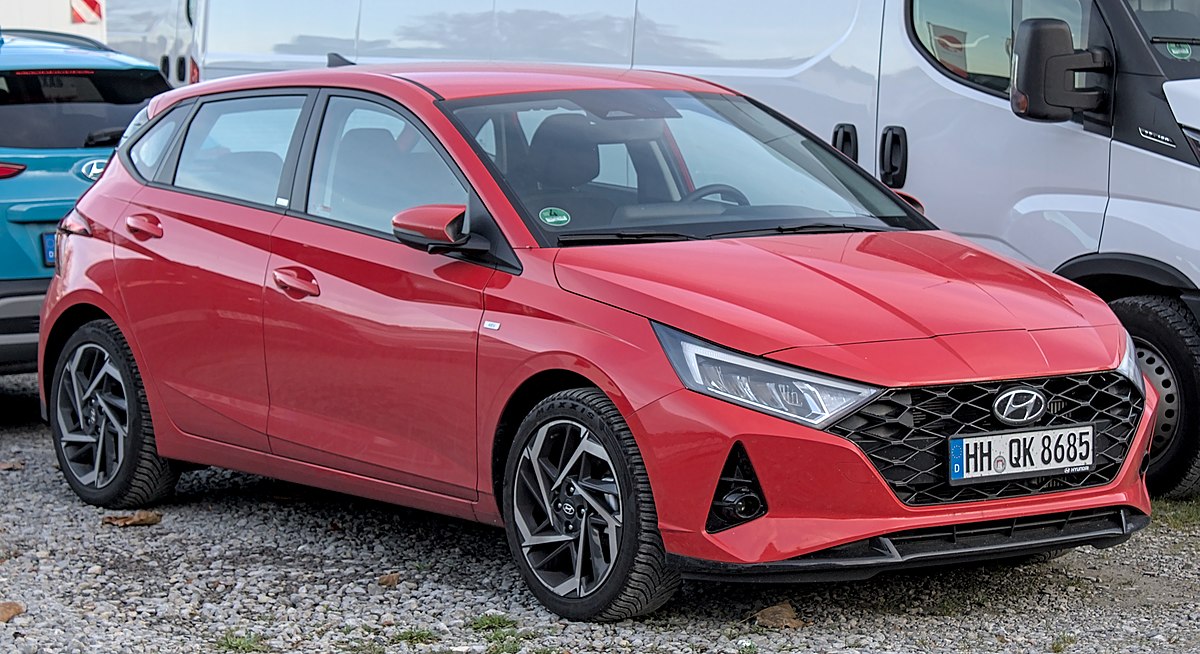
THE new i20 is influenced by Hyundai’s design DNA of “sensuous sportiness,” with a dynamic appearance on the outside and a sumptuous interior.
Its mesmerising presence draws you in, while its linked and intuitive functions improve your comfort and convenience. This is truly a cut above the others. It competes with Volkswagen Polo, Suzuki Swift, Honda Fit, Kia Rio and others.
The Hyundai i20 was released more than a year ago, yet it is one of those unique small cars that you just cannot get enough of. The current Hyundai i20 has set its sights on the sophisticated German, with a large target on its back. Hyundai will try to attract new customers and persuade existing ones to upgrade to the newer i20 model.
With its swept-back LED headlights, triangular fog lamp housings, and sharp, hexagonal grille, the i20 appears grabbed and taut, in keeping with Hyundai’s sensuous sportiness’ reputation.
When viewed from the side, the dynamic greenhouse is evident that it was built to cut through the air, with a drag coefficient of only 0.33.
The i20 has a modern 3D (LED) lighting design across the back that resembles two connecting arrows facing each other, with the ends wrapping around the car’s rear corners. Even though it is not a hot hatch, the i20 looks quick, stylish, and ready to race.
Interior
The i20’s sporty, contemporary design motif is carried over to the inside, which has bolstered black vinyl seats with grey centre stripes, red border, and red topstitching. The computerised cockpit, elegant leather-covered steering wheel, and blue ambient lighting in the doors create an engaging and youthful environment that is not overbearing.
- Chamisa under fire over US$120K donation
- Mavhunga puts DeMbare into Chibuku quarterfinals
- Pension funds bet on Cabora Bassa oilfields
- Councils defy govt fire tender directive
Keep Reading
Teens will appreciate the two USB ports in the front and a third in the back for second-row passengers, as well as the wireless Apple CarPlay capabilities, which can read your WhatsApp messages.
Spotify, Apple Music, and Android Auto are all options for kids to listen to music.
The Fluid (and N Line) models also come with a central wireless charging pad for your phone, which is a nice touch in this price range.
The wide touchscreen and large rapid menu buttons were easy to use, but if your phone is connected, you would probably prefer the hassle-free smartphone mirroring. When you press the on-screen pause or play button, there is a strange delay, but the system else works fine. When you change into reverse, the touchscreen display also shows the rear-camera perspective.
Binnacles strategically positioned provide handy storage for smaller objects. Face masks, remote controls, and house keys can all be stored in the central armrest cubby on Fluid versions.
On row two, the i20 has plenty of legroom, and the spacious boot easily accommodates school bags and everyday sports equipment. The i20 is the ideal hatchback for modest families of three to four people.
Performance The i20 doesn’t like speed bumps and they must be approached with caution due to its firm suspension, but that does not mean it is unsuitable for city driving. All one has to do is try their hardest to avoid the potholes.
The big talking point, if you will, is the use of Hyundai’s three-pot turbopetrol in the tiny Hyundai i20 for the first time. On paper, it produces 90 kW and 172 Nm, and on the road, it lives up to those lofty expectations. The engine is connected to a six-speed manual transmission, and the shelf-shifter option was welcomed by the crew.
When peak torque is available, the engine provides excellent shove starting at 1 500 r/min.
However, be prepared to row through the gears, as the small turbo-triple quickly runs out of revs, forcing the driver to hunt for the sweet spot to extract maximum performance.
The i20 enjoys bends and inter-city road excursions thanks to its low road noise and good road holding. If you stay to the speed limit on highways, fuel economy can be as low as 5 litres per 100 km thanks to the 6th gear.
Driving around town with the kids yielded a fuel economy of roughly 7 to 7.2 litres per 100 kilometres.
Safety
Car safety is something which is extremely important because the roads which we drive on are much more dangerous than what we think. The i20 Fluid comes with six airbags but no traction or stability control; only the top-of-the-line N Line comes with stability control (along with hill-start assist). The rear-middle seat has simply a lap belt, although the i20 is unlikely to have more than two children in it (on a regular basis, anyway).
Verdict
You no longer have to choose between elegance and substance thanks to the brand’s stunning new design.
The i20 has evolved from a sensible, easy-to-drive daily driver to a mature, attractive hatchback with great curb appeal. If you are shopping in this section, you would be foolish to ignore it.
One thing is undeniable: Hyundai has improved the i20 significantly over the previous model: the drive is superior, it comes with more standard equipment, and it is undoubtedly the most attractive vehicle in the competitive B-segment at the moment. Is this enough to persuade customers to avoid the Volkswagen Polo, Ford Fiesta, and Mazda2? The sales figures will be the proof of the pudding for Hyundai.
Specifications
Acceleration 0-100 km/h: 10,34 seconds
Top speed: 190 km/h
Power: 90 kW
Torque: 172 Nm.
CAR fuel index: 7,80 L/100 km











